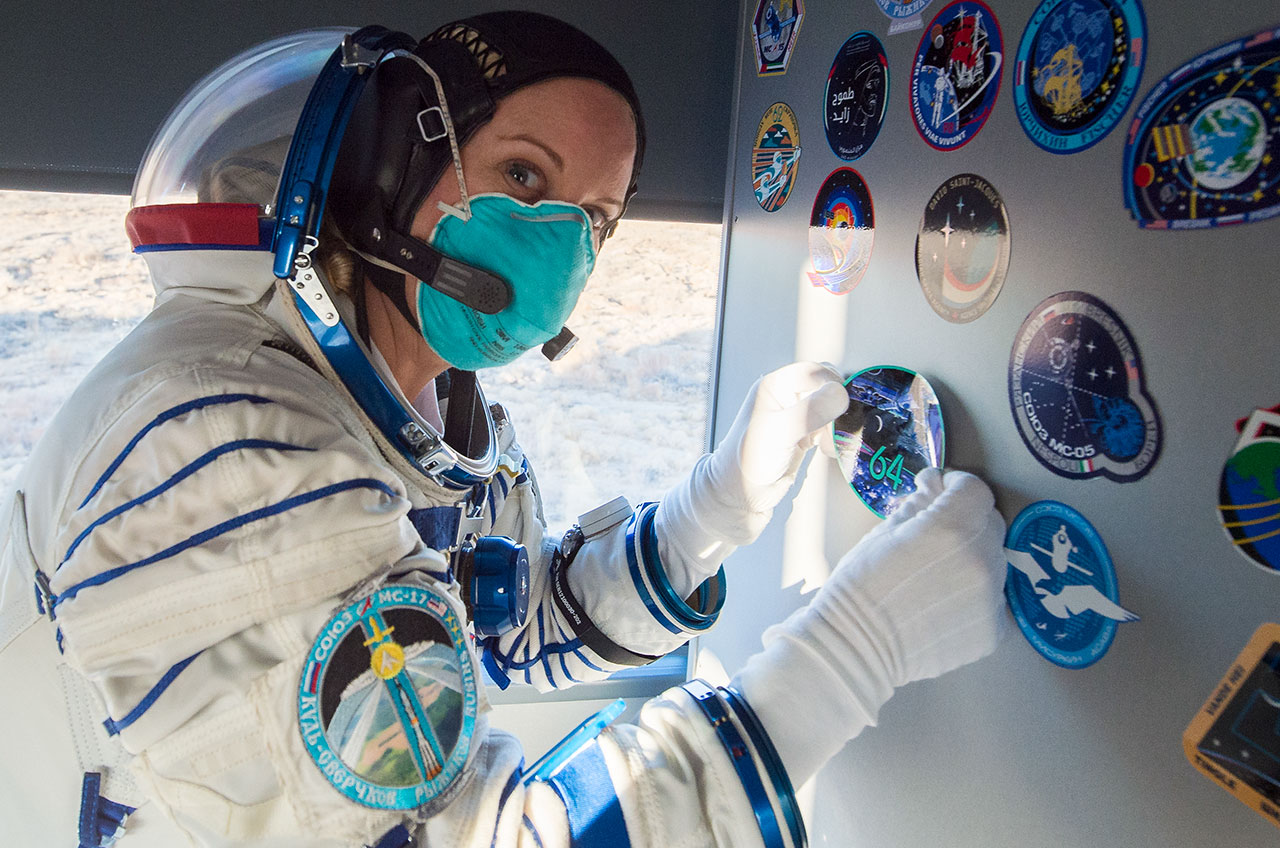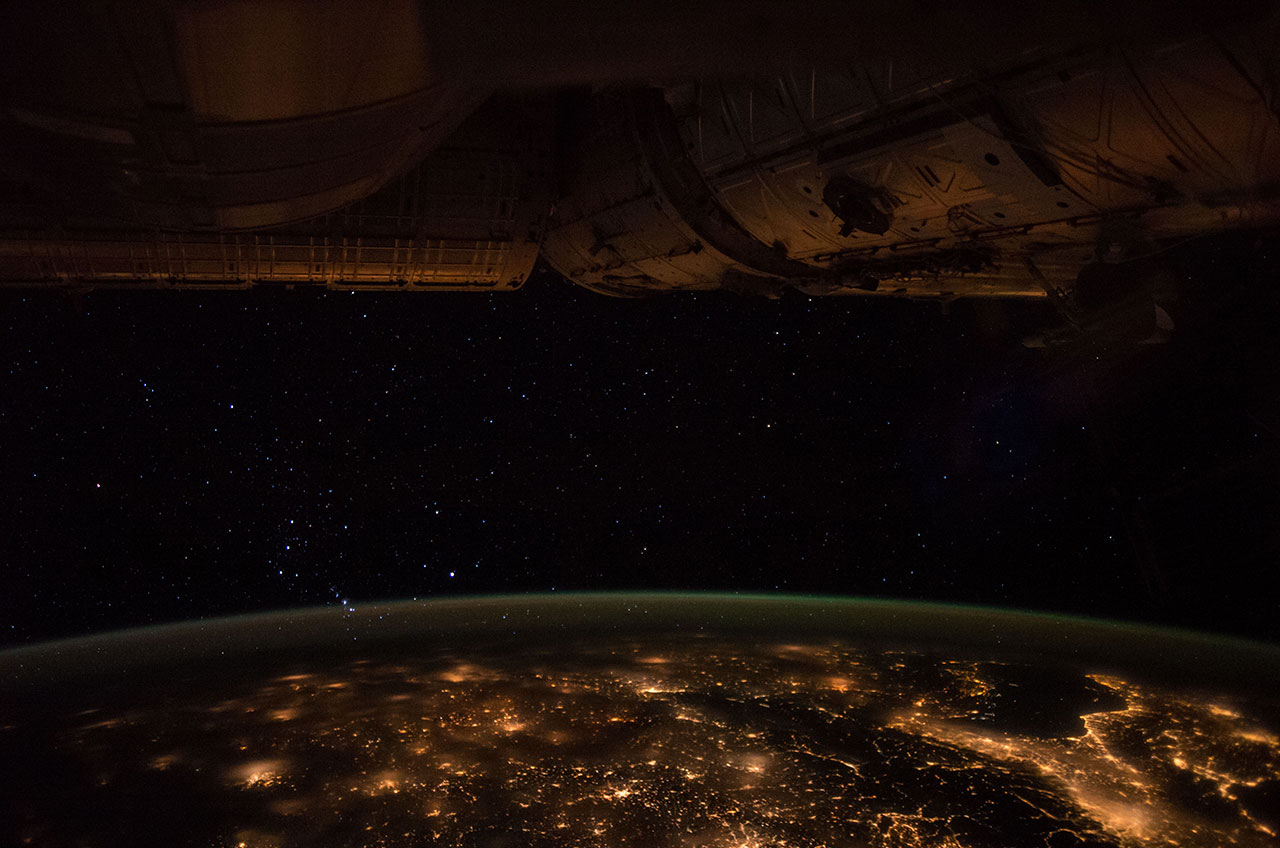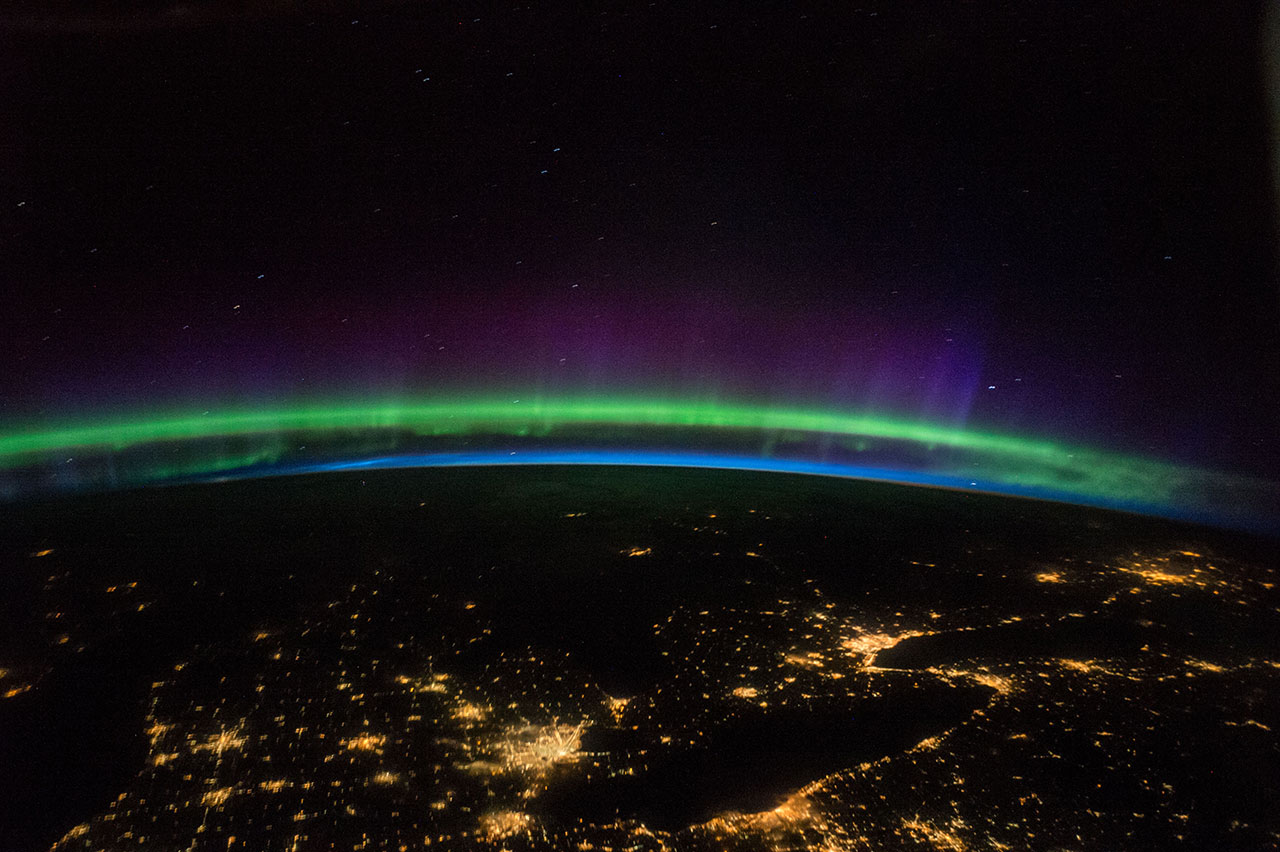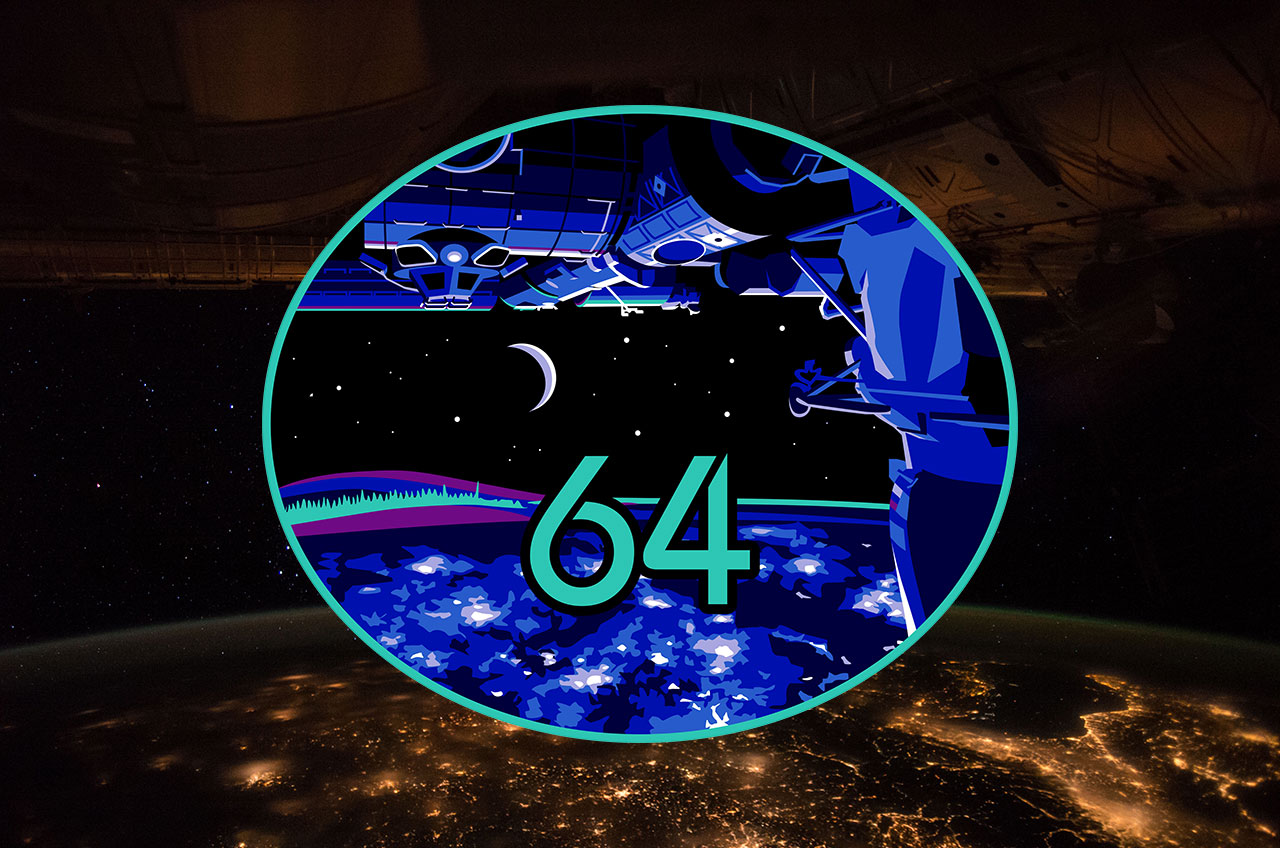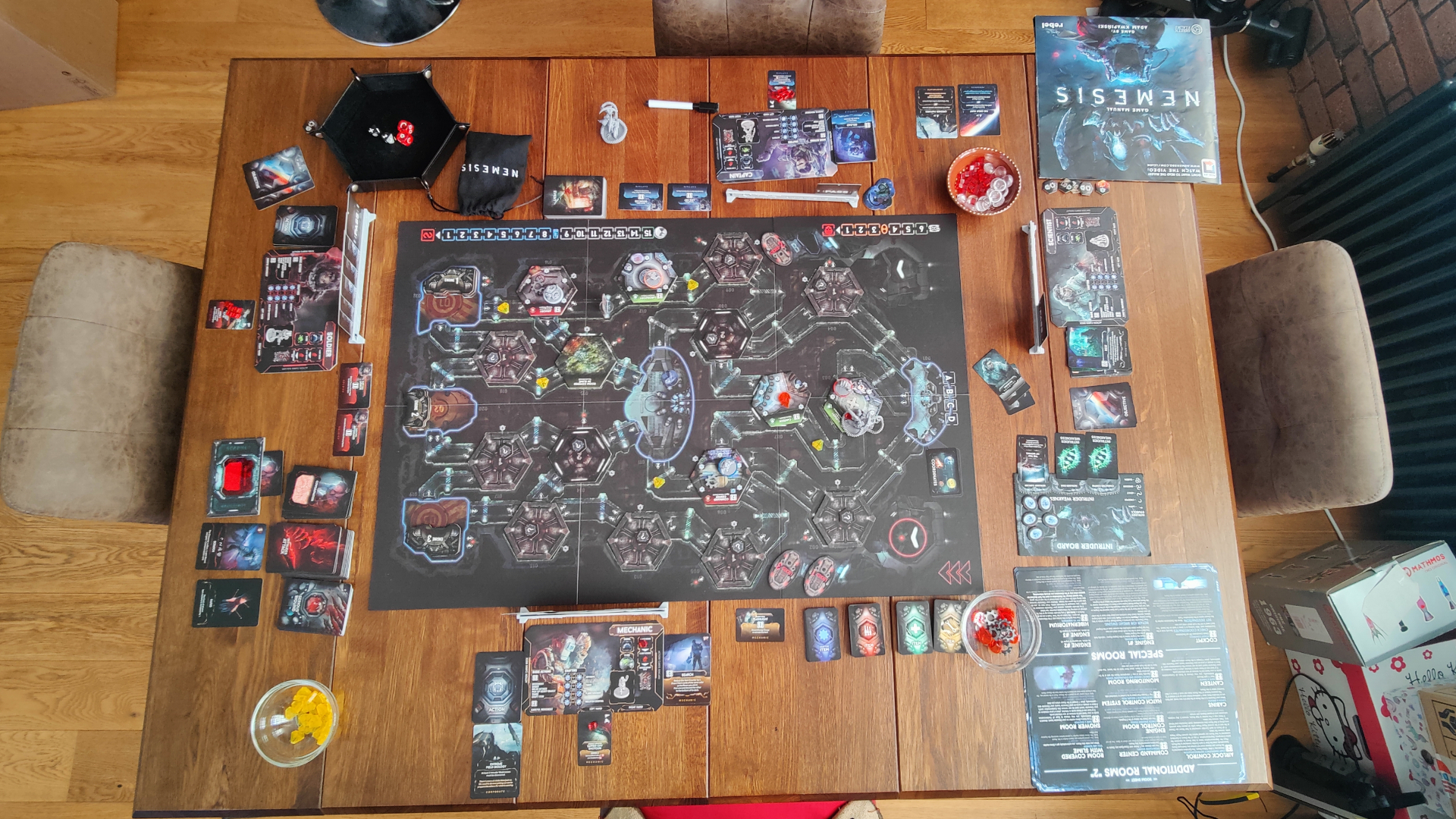Astronaut Kate Rubins drew from photo to design new space station patch
An astronaut's photograph of the Earth is set to represent her and her crewmates' new mission, almost four years to the day after the image was first shared with the public.
NASA flight engineer Kate Rubins, whose previous stay on the International Space Station (ISS) was in 2016, returned to the orbiting laboratory last week. Together with her two crewmates, Sergey Ryzhikov and Sergey Kud-Sverchkov, Rubins will begin the space station's 64th increment when the prior crew departs the station to return to Earth on Wednesday (Oct. 21).
As tradition dictates, with the start of an expedition comes a new mission patch.
Related: Booster or broomstick: Gemini 12 and the 'Halloween patch' that almost was
"The 64 patch is actually a photograph that I took when I was on board the ISS the last time," Rubins said in a pre-flight interview with collectSPACE.com. "It is the underside of the International Space Station as we are flying over city lights in Europe."
Rubins captured the photo on Sept. 28, 2016, as the space station was flying 214 miles (396 km) over the English Channel, off the coast of Penzance in the United Kingdom. At the time, Rubins was a member of the Expedition 49 crew.
"The city lights of Europe illuminate the space station as we fly past," wrote Rubins, providing the caption for her photo as shared by NASA on its social media accounts on Oct. 26, 2016.
Breaking space news, the latest updates on rocket launches, skywatching events and more!
In the photo, the metal skin of the station's modules reflects the orange glow from the city lights below, revealing the orbital complex against the dark night sky. The constellation Orion is seen just above Earth's horizon, which is outlined by the thin green line of the atmosphere.
A similar scene is depicted on the Expedition 64 patch, although the color palette has been shifted from orange to blue. The insignia also adds purple and green aurora to the horizon, which may have been inspired by another of Rubins' photos with similarly-colored northern lights (or aurora borealis), which she took on Aug. 3, 2016 and was shared by NASA two months later.
The patch art omits the star pattern that forms Orion, as seen in Rubins' photo, but it has seven bright stars for the seven Expedition 64 crew members (four more astronauts will join Rubins, Ryzhikov and Kud-Sverchkov when SpaceX's Crew-1 mision launches). The emblem also includes the moon, symbolizing NASA's next destination for human exploration.
Rubins chose the photo she did for the patch because, to her, it represented how the space station and planet it orbits are connected.
"You can see all the lights of the cities being reflected on the underside of the space station. I just thought it was this great analogy of the connectedness between Earth and space," Rubins told collectSPACE. "And then you can see, of course, the station pass overhead [from] one of those cities at night."
Rubins, Ryzhikov and Kud-Sverchkov wore the Expedition 64 patch on their Sokol pressure suits for their launch, along with another insignia that featured a photo.
The Soyuz MS-17 mission patch marked Russia's first use of dye-sublimation. While most of the cloth emblem was embroidered, its center was printed to reproduce an aerial photo taken by Ryzhikov of his homeland in Russia.
"The inside part of the patch pictures Earth's surface symbolizing careful attitude to our planet and gratitude towards our native land, feeding, inspiring, supporting and giving strength," Ryzhikov said in a statement issued by Roscosmos, Russia's federal space corporation.
Expedition 64 is scheduled to be six months long, ending when Rubins, Ryzhikov and Kud-Sverchkov return to Earth on their Soyuz MS-17 spacecraft in April 2021.
Follow collectSPACE.com on Facebook and on Twitter at @collectSPACE. Copyright 2020 collectSPACE.com. All rights reserved.

Robert Pearlman is a space historian, journalist and the founder and editor of collectSPACE.com, a daily news publication and community devoted to space history with a particular focus on how and where space exploration intersects with pop culture. Pearlman is also a contributing writer for Space.com and co-author of "Space Stations: The Art, Science, and Reality of Working in Space” published by Smithsonian Books in 2018.
In 2009, he was inducted into the U.S. Space Camp Hall of Fame in Huntsville, Alabama. In 2021, he was honored by the American Astronautical Society with the Ordway Award for Sustained Excellence in Spaceflight History. In 2023, the National Space Club Florida Committee recognized Pearlman with the Kolcum News and Communications Award for excellence in telling the space story along the Space Coast and throughout the world.

